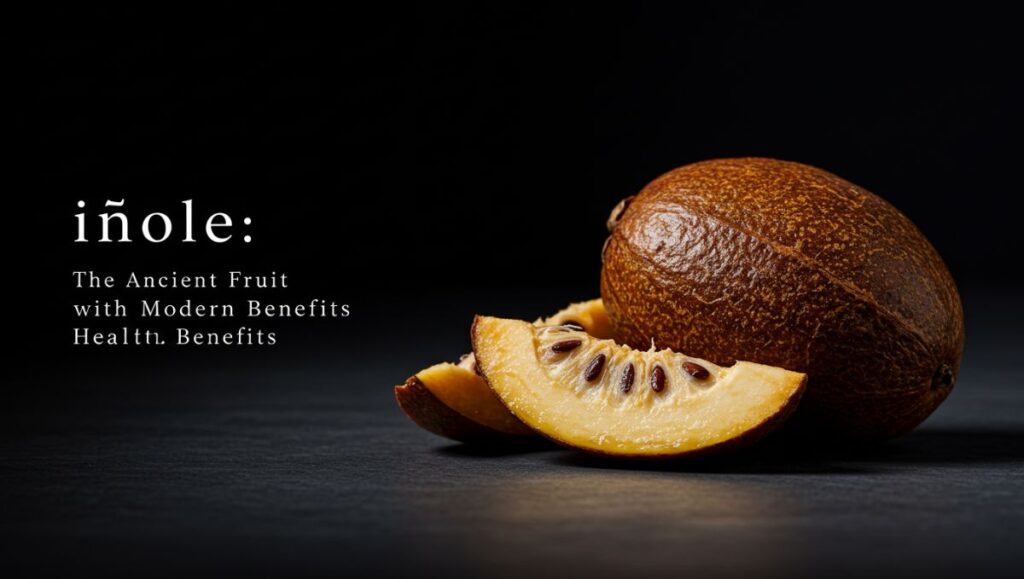In the Mediterranean, along the Adriatic coast, and in parts of Asia, the fruit known as žižole has long been treasured for its sweet taste and medicinal properties. Also called jujube or Chinese date, žižole grows on the hardy Ziziphus jujuba tree, which thrives in warm, dry climates.
Loved for thousands of years, žižole is more than just a snack. It carries cultural meaning, nutritional richness, and growing recognition as a natural superfood.
What Are Žižole?
Žižole are small, oval fruits that range from yellow-green to reddish-brown when ripe. Their texture and flavor shift as they mature: fresh žižole taste crisp and apple-like, while dried ones resemble dates, with chewy flesh and concentrated sweetness.
The tree itself is hardy and long-lived, symbolizing resilience. It has been cultivated for over 4,000 years in China and gradually spread to the Mediterranean, where it adapted to coastal regions.
Nutritional Profile of Žižole
Žižole may be small, but they are nutrient powerhouses. Key nutritional components include:
-
Vitamin C – High levels support immune strength.
-
Antioxidants – Protect cells from oxidative stress.
-
Minerals – Such as potassium, calcium, and phosphorus.
-
Fiber – Promotes healthy digestion.
-
Amino acids – Support metabolism and repair processes.
This unique balance of nutrients makes žižole both a traditional remedy and a modern wellness food.
Health Benefits of Žižole
1. Boosts Immunity
Thanks to their high vitamin C and antioxidant content, žižole strengthen the immune system and help the body defend against infections.
2. Supports Digestion
Their natural fiber improves gut health, regulates bowel movements, and supports nutrient absorption.
3. Improves Sleep and Relaxation
In traditional medicine, ži-žole are known for calming effects. Compounds like saponins may help reduce anxiety and improve sleep quality.
4. Enhances Skin Health
Antioxidants in ži-žole slow skin aging, while vitamin C promotes collagen production for youthful, firm skin.
5. Provides Energy
Dried ži-žole are nutrient-dense and rich in natural sugars, making them an excellent energy-boosting snack for athletes and active lifestyles.
Žižole in Traditional Medicine
For centuries, ži-žole have been used in folk and herbal medicine. In Traditional Chinese Medicine, they are believed to:
-
Nourish the blood.
-
Calm the mind.
-
Improve digestive balance.
In Mediterranean folk traditions, ži-žole were often given as remedies for colds, fatigue, and stress. Their dual role as food and medicine highlights their cultural importance.
Culinary Uses of Žižole
Fresh Consumption
When ripe, žižole are eaten fresh like apples. Their crisp texture makes them a refreshing snack.
Dried Žižole
Drying intensifies their sweetness, creating a chewy, date-like treat that can be stored for months.
Teas and Infusions
Dried ži-žole are commonly steeped in hot water to create calming teas rich in antioxidants.
Desserts and Cooking
Ž-ižole can be added to cakes, jams, syrups, and even savory dishes, offering a unique sweet note.
Modern Superfood Recipes
Smoothies, energy bars, and health tonics increasingly feature ži-žole as natural sweeteners and nutrient boosters.
Growing and Harvesting Žižole
The ži-žole tree thrives in sunny, dry regions with well-drained soil. It is drought-resistant, making it suitable for Mediterranean climates. Harvesting typically takes place in late summer to early autumn, depending on the region.
Farmers appreciate ži-žole for their resilience, while consumers value their health benefits—making cultivation increasingly popular.
Cultural Significance of Žižole
In Croatia and other Mediterranean regions, ži-žole hold cultural symbolism. They are associated with:
-
Hospitality – often shared with guests as snacks.
-
Festivals – sometimes featured in local markets and seasonal celebrations.
-
Tradition – seen as a connection between past generations and modern lifestyles.
In Asia, particularly China and Korea, ži-žole are linked to wellness rituals, festivals, and symbolic meanings of prosperity and longevity.
Žižole in Modern Wellness Trends
With rising global interest in superfoods, ži-žole are regaining attention. Their blend of sweetness, nutrients, and traditional healing qualities position them as:
-
A natural alternative to processed snacks.
-
An ingredient in wellness teas and supplements.
-
A bridge between cultural heritage and modern health-conscious living.
Sustainability of Žižole Cultivation
The drought-resistant nature of ži-žole trees makes them valuable in sustainable agriculture. They require minimal irrigation, resist many pests, and enrich local biodiversity.
By promoting ži-žole farming, regions can preserve traditions while supporting eco-friendly practices.
Future of Žižole
Looking ahead, ži-žole are set to play a bigger role in global nutrition and food industries. Possible future trends include:
-
Wider commercial farming for global export.
-
Functional foods and supplements made from ži-žole extracts.
-
Culinary innovation, blending traditional recipes with modern gastronomy.
As more people rediscover this fruit, žižole may become a staple in health and wellness markets worldwide.
Conclusion
Žižole are much more than seasonal fruits. They carry centuries of tradition, offer a wealth of nutrients, and fit perfectly into modern health-conscious lifestyles. From fresh snacks to dried treats and medicinal uses, žižole bridge the gap between culture and wellness.
By embracing žižole, we not only enjoy their sweet, versatile taste but also connect with a long history of resilience, health, and cultural richness.







